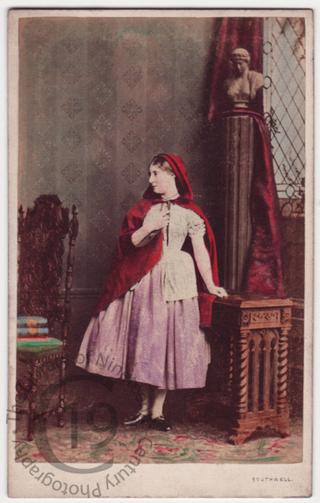
Lydia Thompson as 'The Colleen Bawn'
The ‘sensation’ drama was a phenomenon of the British stage during the 1860s. So named not only for the sensational nature of their plots but also for the sensations of intense excitement which they aroused in their audience. Their melodramatic storylines often included an inheritance and a heroine beset by villains and were usually peppered with some combination of murder, madness, bigamy, illegitimacy, adultery, violence or dreadful accident. One essential feature of any sensation drama was the sensation scene, a particularly melodramatic crescendo in the plot accompanied by the very latest in sophisticated and stunning stage effects. Some of the most remarkable of the decade plunged theatre audiences into paroxysms of delightful fear, astonishing them with the spectacle of an earthquake, an avalanche, a blazing inferno or even a train crash.
One of the first and most popular sensation dramas was The Colleen Bawn by the Irish playwright Dion Boucicault. Following a run in New York, it opened in London at the Adelphi on 10 September 1860. The plot of the play revolved around a secret marriage between the characters Hardress Cregan and Eily O’Connor, the colleen bawn of the title (a ‘colleen’ being an Irish lass and ‘bawn’ being an anglicized version of the Gaelic word for bonny).
One of the most successful plays of its time, and the first to enjoy a long run of modern proportions, it earned its author a small fortune. There were, of course, many spin-offs, including an opera at Covent Garden — The Lily of Killarney by Sir Julius Benedict — and numerous burlesques and parodies.
Photographed by the Southwell Brothers of London and entered at Stationers’ Hall on 3 October 1862. According to the form accompanying the photograph, Miss Thompson is seen here in 'The Colleen Bawn Settled at Last', which was a one-act 'burlesque extravaganza' of the original by W. Brough and A. Halliday, first produced at the Lyceum Theatre in London on 5 July 1862.
Code: 124474




